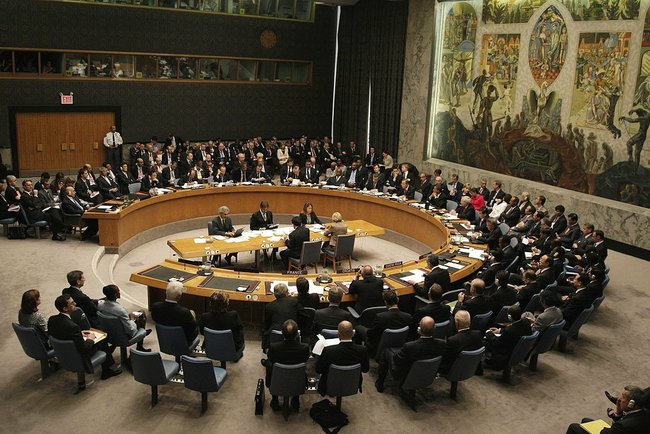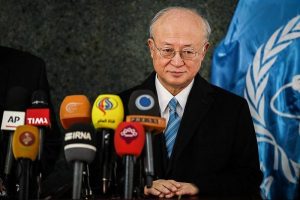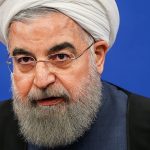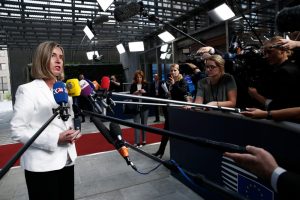by François Nicoullaud
Paris, France—This is not the first time that we may have trapped ourselves when drafting UN Security Council (UNSC) resolutions that were intended to trap another country—in this case, Iran. The present situation recalls in some respects the period around 1997 when most Security Council members would have liked to rescind, or at least amend, the sanctions adopted against the regime of Saddam Hussein after the 1991 Gulf War, as their effects were obviously getting out of hand: widespread corruption, and the dramatic deterioration of the Iraqi population’s state of health, to name a couple. But any change in the sanctions would have required unanimity from the five permanent members of the Council, and that was definitely out of reach. The situation led French President Jacques Chirac to express his frustration. “We want to convince, not coerce,” he said. “I have never observed that the policy of sanctions can produce positive effects.”
We have not yet reached such a dramatic juncture with Iran. But should it become useful to rapidly lift the sanctions imposed by the four UNSC resolutions between 2006 and 2010 in order to secure a comprehensive agreement on Iran’s nuclear program, the Western negotiators may find themselves incapable of delivering and may instead try to kick the can down the road to some point in the distant future.
Aimed at halting Iran’s military, nuclear and ballistic activities, these UNSC resolutions are not the ones that hurt the most. More destructive are those unilateral measures imposed by the United States and the European Union, since they were designed essentially to destabilize the Iranian economy. But the UNSC sanctions carry with them a “pillory effect” that the Iranians perceive, quite correctly, as deeply humiliating. They also provide the legal bedrock upon which the European sanctions, in particular, have been constructed. The Iranians are therefore anxious to see them lifted as soon as possible through a decision by the Security Council to close the file it opened in 2006 and return it to the forum from which it should never have been taken: the International Atomic Energy Agency (IAEA).
The conditions for terminating these resolutions, however, are also overwhelming. In fact, the people who drafted them seem to have been pursuing two not necessarily compatible goals at the same time.
The first goal was to pile up all the preconditions that the authors believed were necessary to prevent Iran from acquiring a deliverable nuclear device, including:
- suspending all activities related to enrichment and reprocessing, including research, development, and construction of new facilities;
- suspending all activities related to the construction of a heavy-water research reactor;
- providing immediate access to all sites, equipment, persons and documents requested by the IAEA in order to verify Iran’s compliance with the Security Council decisions and to resolve all outstanding issues related to the possible military dimensions (PMD) of the Iranian nuclear program;
- promptly ratifying the Additional Protocol to Iran’s safeguards agreement with the IAEA; and
- suspending all efforts to develop ballistic missiles capable of delivering nuclear weapons.
Considering the context in which these resolutions were adopted, there was little chance that the Iranians would comply with such an elaborate and comprehensive set of so-called “confidence-building measures,” which would have forced Tehran to abandon virtually all of its nuclear and ballistic-missile ambitions.
The second goal was substantively quite different from the first and indeed somehow contradictory. It aimed to push Iran into negotiations, as illustrated by the formula that was included in all the UNSC sanctions resolutions, which ritually expressed the “conviction” that Iran’s compliance “would contribute to a diplomatic, negotiated solution.” Moreover, if Iran suspended its enrichment and reprocessing activities, the Council declared its willingness in return to suspend at least some of its sanctions in order “to allow for negotiations in good faith” and “reach an early and mutually acceptable outcome.”
As we now know, a negotiation process ultimately was initiated, albeit through a radically different path, as the West dropped its demand that Iran fully suspend all its sensitive nuclear activities before entering into substantive talks. One can therefore assume that the second goal will be accomplished as soon as a comprehensive agreement, which will hopefully emerge from the current round of talks in Vienna, enters into force, thus rendering this dimension of the UNSC’s resolutions totally obsolete.
But of course, the resolutions’ first dimension—the exhaustive inventory of “confidence-building measures”—remains in place. Because confidence is essentially an elusive and subjective feeling, taking this path involves embarking on a long-term, winding and always reversible road, the end of which is only faintly discernible now. Such a process is also hardly compatible with the “on-off” mechanism of the Security Council: there is no chance that its resolutions, once cancelled, could be reintroduced. Hence the strong reluctance of the Western powers to commit themselves to such an outcome.
We also all know that the sanctions are much easier to adopt than to rescind, as they tend to create, in the meantime, their own logic and dynamics. They develop new balances of power and vested interests, if only among those in authority who have dedicated themselves so thoroughly to the sanctions’ implementation and enforcement. One has only to recall the notorious example of the general embargo imposed by the Allies against Germany during the First World War whose continuation for several months after the 1918 Armistice unnecessarily prolonged the suffering of the German people and deepened the bitterness of their defeat.
Are Iran’s negotiating partners ready to learn the lessons of history? The Gordian knot that the UNSC sanctions represent should be slashed asunder, if not immediately upon the signing of a comprehensive agreement with Iran, then at least after a moderately short period in which Iran’s determination to comply with its terms could be confirmed. Such a gesture could also be linked appropriately to the formal ratification by Iran’s parliament of the Additional Protocol that Tehran had signed during an unsuccessful round of talks back in 2003—the two moves being equally irreversible.
This would not mean that pending requests made to Iran, such as the ancient issue of the “possible military dimensions” (PMD) of its nuclear program, would have to be abandoned. But it would mean that these requests would thenceforward be dealt with exclusively by the IAEA. It would also mean that the Council, in light of the progress achieved after the signing of a final deal, would no longer consider the Iranian situation a “threat to the peace” under the terms of the UN Charter’s Chapter VII, the only chapter that authorizes the use of coercive measures against a Member State in order “to maintain or restore international peace and security.”






If they don’t lift the sanctions quickly after a deal then there is no reason for Iran to even seek a deal. Under sanctions it is better to have a bomb rather than not have one
This is an excellent exposition of the cover story that the Iran nuclear crisis really exists. But of course it doesn’t. The real issue is that the US seeks regime change in Iran and the IAEA’s Yukiya Amano is a US agent.
US diplomatic cables published by WikiLeaks which revealed Amano’s assiduous courting of American support. In an October 2009 cable, the US charge d’affaires, Geoffrey Pyatt, wrote: “Amano reminded [the] ambassador on several occasions that he would need to make concessions to the G-77 [the developing countries group], which correctly required him to be fair-minded and independent, but that he was solidly in the US court on every key strategic decision, from high-level personnel appointments to the handling of Iran’s alleged nuclear weapons program.”
The US is the major funding source of the IAEA, which contrary to media portrayals (not here) is not a UN agency. It’s only mission under the NPT is to ensure that nuclear fuel is not diverted to weapons, which it has consistently affirmed in Iran.
You reap what you sow. How true these words. Considering the costs incurred by the U.S. for all the different regime changes so far in the M.E./N.A., what has been the success rate to date? Has it been worth the costs? Is it worth the costs to continue the same worn out plan?
Under article 10 of NPT any member can legally withdraw provided it gives forward notice to the depository states, I think they are US, GB and Russia. Within this notice the country leaving the NPT will explain the “extra ordinary events, related to the subject matter of [NPT] have jeopardized the supreme interests of its country”, IRI can certainly point to many “extra ordinary events”, should it decide to depart NPT.
As Mr. Nicoullad projected, should there be a “Gordian Knot” that will be left for future leaders to untie and with the arrival of an outright hostile US Congress in January, that has declared “any deal is DOA on arrival”, additionally, in another 2 years a probable election of a US President that could be equally hostile to Iran; what incentive does IRI have to sign an agreement that virtually gives it nothing and in return wants everything?
It seems that the “international community” needs to revisit the NPT document that denotes member rights, both for nuclear and non-nuclear nations.
If there is a negotiation going on, what are we negotiating on our part, some people may ask?